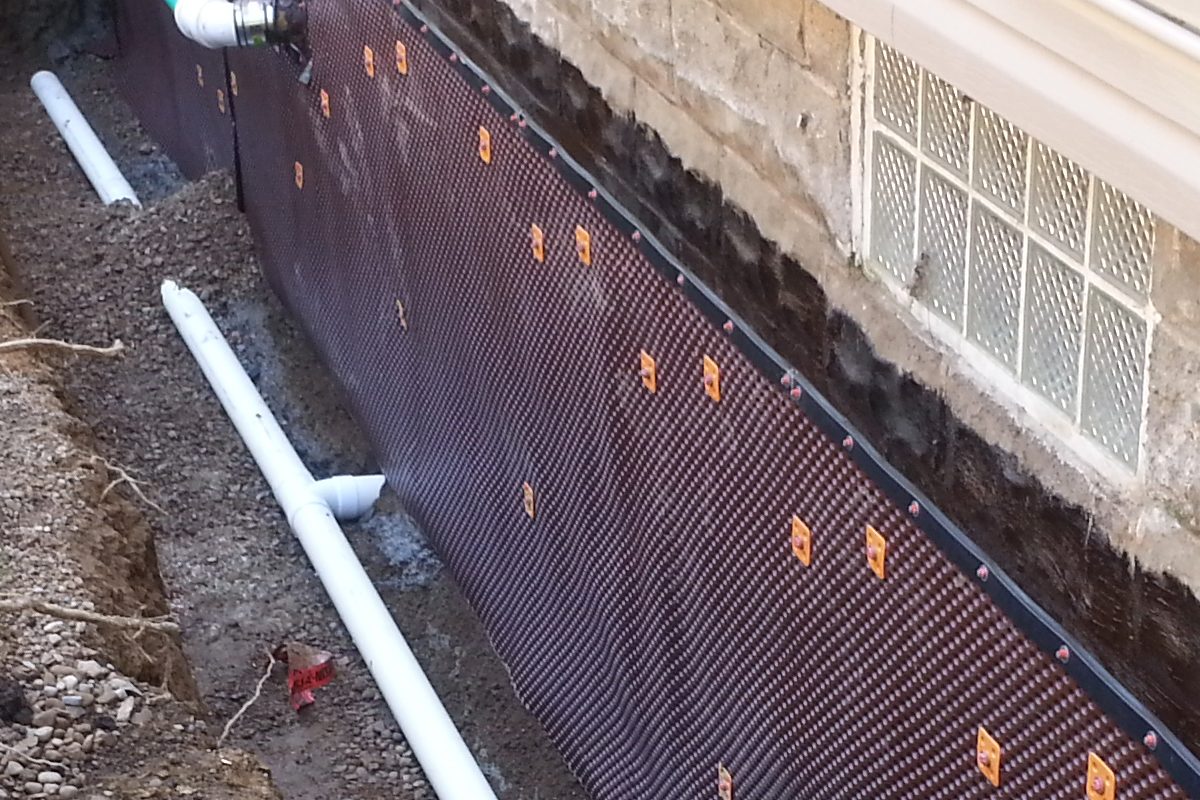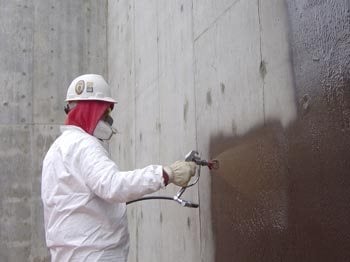The ultimate manual to mould treatment newcastle: Process from start to finish
Understanding the Importance of Damp Proofing in Preventing Structural Damage
Wet proofing functions as a necessary protection against moisture infiltration in buildings. This protective action can stop substantial structural damages, yet many residential property owners continue to be not aware of its significance. Identifying the indications of wetness and comprehending the numerous solutions readily available can be important. Ignoring wet proofing can lead to severe repercussions. What are the particular threats and services that homeowner should consider?
What Perspires Proofing and How Does It Work?
Damp proofing offers as a vital barrier versus moisture breach in buildings. mould removal newcastle. This procedure entails applying particular products and strategies to stop water from passing through wall surfaces, floors, and various other architectural components. Typically, wet proofing can be achieved with the installation of damp evidence membrane layers, coatings, or using specialized sealants.These methods work by creating a protective layer that inhibits moisture motion, ensuring that the indoor environment stays healthy and balanced and completely dry. Moist proofing is specifically important in areas vulnerable to high moisture or groundwater, as it helps preserve the stability of the framework over time.Moreover, reliable damp proofing adds to energy performance by protecting against heat loss linked with wet environments. By dealing with possible dampness concerns prior to they escalate, damp proofing serves as an aggressive procedure in guarding structures from the destructive results of water damages, inevitably extending their life-span and preserving their value
Usual Signs of Wetness in a Structure
Moisture concerns within a structure can materialize via a number of obvious indications that suggest the presence of dampness. One noticeable indication is the appearance of water discolorations on ceilings or wall surfaces, which typically indicates wetness infiltration. Additionally, peeling off or gurgling paint can recommend that excess moisture is caught underneath the surface, resulting in deterioration. Another typical sign is the presence of mold and mildew and mildew, which flourish in wet conditions and can often be recognized by their mildewy odor. A rise in moisture degrees can trigger condensation on home windows and various other surfaces, highlighting dampness troubles. Lastly, irregular or distorted floor covering might signify underlying wetness that jeopardizes structural integrity. Identifying these indicators early can help reduce possible damage and keep a risk-free living environment. Regular examinations and timely activity are crucial in resolving wetness problems before they intensify.
The Dangers of Ignoring Damp Proofing
Overlooking moist proofing can result in substantial risks to a structure's structural stability, as wetness buildup may damage wall surfaces and foundations. In addition, prolonged moisture develops a setting helpful to mold growth, posing major carcinogen to owners. Addressing these threats is crucial for making sure both safety and security and longevity of the building.
Architectural Stability Risks
They expose their homes to significant structural integrity risks when property owners neglect the importance of efficient damp proofing. Prolonged wetness infiltration can lead to the development of mold, which compromises fundamental components and can compromise total security. Additionally, excess moisture can deteriorate concrete and brickwork, leading to fractures and structural failings. Timber components are specifically vulnerable; they can rot and lose load-bearing ability, presenting serious threats to the building's framework. Neglected wet problems might attract parasites, such as termites, which better worsen architectural degeneration. Ultimately, overlooking wet proofing steps can bring about pricey repairs and possible security dangers, emphasizing the important function of aggressive wet monitoring in protecting the honesty of homes.
Carcinogen Worries
Just how can a relatively small oversight lead to severe health risks? Neglecting damp proofing can create an atmosphere for mold and mildew growth, which positions significant health and wellness hazards. Mold and mildew spores can activate sensitive responses, respiratory concerns, and other health and wellness issues, specifically in vulnerable populaces such as children, the senior, and individuals with pre-existing conditions. In addition, consistent dampness can bring in bugs like rats and pests, which lug diseases that better endanger wellness. The existence of moisture additionally adds to a decline in interior air high quality, worsening bronchial asthma and other breathing ailments. Consequently, the failing to attend to moist problems not only endangers architectural stability but likewise endangers the wellness of occupants, highlighting the vital demand for reliable damp proofing actions.
Different Types of Damp Proofing Solutions
Although numerous variables can add to damp concerns in structures, picking the appropriate damp proofing remedy is necessary for preserving architectural integrity. Numerous alternatives are readily available, each tailored to particular conditions.One common option is a damp-proof membrane layer (DPM), typically constructed from polyethylene or asphalt, which is set up in wall surfaces and floorings to stop dampness access. Another alternative is damp-proof programs (DPC), which are layers of water resistant material put within walls to block rising damp.Chemical damp proofing entails injecting waterproofing chemicals right into wall surfaces to produce an obstacle versus wetness. Additionally, external treatments such as tanking, which involves using a water resistant layer to the beyond foundations, can be effective in avoiding water penetration.Each option has its advantages and is picked based upon the structure's particular concerns, environmental conditions, and lasting maintenance considerations, guaranteeing suitable security against damp-related damages.

The Expense of Damp Damages vs. Prevention
Recognizing the monetary ramifications of damp damages compared to prevention highlights the relevance of aggressive steps. The prices related to wet damage can be considerable, consisting of repair services to architectural components, mold and mildew removal, and prospective health-related expenses. Property owners may encounter considerable economic strain if comprehensive damage happens, leading to raised insurance policy costs and lost residential property value.In comparison, buying damp proofing services is generally much more affordable. Preliminary costs for avoidance approaches, such as boosting or installing damp-proof membrane layers drain systems, are frequently surpassed by the lasting cost savings from avoiding expensive repair services. Furthermore, stopping damp issues can enhance a residential property's total worth and allure, making it a wise financial investment. When reviewing the price of wet damage versus avoidance, it comes to be clear that taking proactive actions can protect financial interests and maintain the stability of the residential property with time.
Choosing the Right Damp Proofing Approach for Your Residential property
Which damp proofing technique is most appropriate for a particular property commonly depends upon various variables, consisting of the structure's age, existing moisture problems, and local environmental conditions. For older frameworks, standard techniques such as asphalt membrane layers or cementitious finishings may be a lot more reliable, website as they can supply a durable obstacle against climbing damp. In contrast, newer structures may benefit from modern solutions like infused damp-proof training courses, which are much less intrusive and can be customized to particular wetness challenges.Additionally, properties in areas with high water tables or heavy rains may need advanced techniques, such as tooth cavity wall surface drainage systems or external waterproofing. House owners ought to additionally consider the particular materials used in their building's building and construction, as some techniques may not be compatible. Eventually, a complete analysis by a professional can assist homeowner in choosing the most effective damp proofing method tailored to their unique situations.
Maintaining Your Damp Proofing System Gradually
Normal maintenance of a moist proofing system is necessary for guaranteeing its long-term effectiveness and shielding a residential or commercial property from moisture-related damages. Homeowner must carry out routine examinations to identify any indications of wear or concession in the damp proofing layer. This consists of checking for splits, peeling off paint, or mold growth, which may suggest dampness intrusion.Additionally, it is a good idea to clean gutters and downspouts regularly to avoid water build-up around the structure. Reapplying sealers or membranes might be required if degeneration is observed.Engaging expert solutions for routine evaluations can even more improve the toughness of the system. These professionals can offer insights into possible susceptabilities and advise prompt repair work.
Frequently Asked Inquiries
For How Long Does Damp Proofing Treatment Last Before Needing Repairs?
The longevity of moist proofing treatment normally varies from 10 to thirty years, depending on factors such as the method utilized, ecological conditions, and upkeep techniques. Normal inspections can aid identify when repair work may be essential.
Is DIY Damp Proofing Effective Compared to Expert Providers?
The efficiency of do it yourself wet proofing varies substantially. damp removal newcastle. While some individuals might achieve sufficient outcomes, specialist services generally assure complete options, leveraging knowledge and top quality products to protect against future issues extra accurately than a lot of do it yourself attempts
Can Damp Proofing Improve Indoor Air High Quality?
The inquiry of whether damp proofing can enhance interior air top quality occurs regularly. Efficient moist proofing reduces dampness degrees, thus decreasing mold development and irritants, ultimately contributing to a healthier interior setting for residents.
Are There Specific Rules for Damp Proofing in Various Locations?
Laws for wet proofing vary by area, usually affected by regional structure codes and environmental conditions. Compliance assurances effective moisture control, promoting and safeguarding frameworks security, which highlights the need for adherence to these details regulations.

What Are the Long-Term Advantages of Proper Damp Proofing?
The long-lasting advantages of proper wet proofing include enhanced structural honesty, reduced maintenance costs, enhanced indoor air top quality, and boosted residential property worth. These advantages contribute to a healthier living setting and prolonged life expectancy of structures. Generally, damp proofing can be attained with the setup of damp proof membranes, coatings, or the use of specialized sealants.These approaches function by creating a safety layer that hinders wetness motion, making certain that the interior environment remains healthy and balanced and dry. Moist proofing is particularly important in locations vulnerable to high moisture or groundwater, as it assists preserve the integrity of the structure over time.Moreover, efficient wet proofing adds to power effectiveness by preventing warm loss linked with damp settings. Disregarding damp proofing can lead to significant risks to a building's structural stability, as wetness build-up might damage foundations and wall surfaces (damp specialist newcastle). Numerous aspects can add to damp problems in buildings, choosing the appropriate wet proofing remedy is necessary for maintaining structural stability. Which wet proofing method is most appropriate for a particular property frequently depends on different variables, including the building's age, existing moisture problems, and local environmental conditions